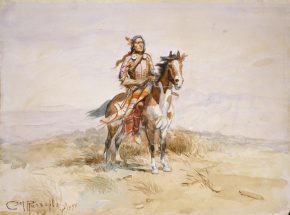

Born in Pennsylvania, Stephen D. Wilson was part of a generation of American artists who were helping to forge a definition of American culture just as America’s lawmakers and frontiersmen were quite literally forging the nation—expanding its physical territory and shaping the metaphorical territory of its laws and morals. Part of that process included the development of a robust portrait tradition. Artists like Wilson worked in the shadow of the earlier generation of portrait painters like Gilbert Stuart, who had established himself as perhaps America’s greatest portraitist. Stuart was celebrated for his frank and vivid likenesses of the founding fathers.
Wilson’s portrait of Andrew Jackson, which was painted in the same year that Jackson died, depicts America’s seventh president not in the prime of his youth but showing signs of age, weary, perhaps, but wizened. Jackson had a long, turbulent career in the public eye, first in the military and later as governor, senator, and president. Today his presidency is remembered most for its aggressive stance against the Native American population; he was responsible for the Indian Removal Act of 1830, which greatly expanded the territory of the United States at great cost to the people already inhabiting the land.
In this portrait, Wilson’s use of subdued colors against a dark background and a three-quarter view reveal his indebtedness to earlier American portraiture, creating a continuity in the pictorial tradition. This visual continuity also provides a link between the earlier generation of statesmen and Jackson himself, who is thus equated with such vaunted figures as George Washington and Thomas Jefferson.
